We’re all using them, and we all adore their compactness. Our modern home runs on small appliances. From air fryers and toasters to coffee machines and compact blenders, these everyday workhorses make our lives faster, cleaner, and easier. Yet behind the convenience lies an economic truth most consumers overlook — the cost of producing these devices is about to rise sharply. You had braced for impact, right?
News is, global trade policies, supply chain disruptions, and new tariff structures introduced in late 2025 are poised to affect household electronics and appliances across the U.S., U.K., and Europe. Analysts are warning of price hikes between 10% and 25% on imported small appliances by early /;, especially those manufactured or assembled in East Asia. That means the gadgets we take for granted — the smart kettles, portable coffee makers, and countertop ovens — could soon cost noticeably more.
For consumers, that presents both a problem and an opportunity.
If you’ve been planning to upgrade your home’s small appliances, now is the time. Acting before tariffs take full effect could save hundreds of pounds or dollars over the next few months. But making smart purchases requires understanding why prices are rising, which products will be most affected, and which are genuinely worth buying before the wave hits.
A Perfect Storm in the Appliance Market
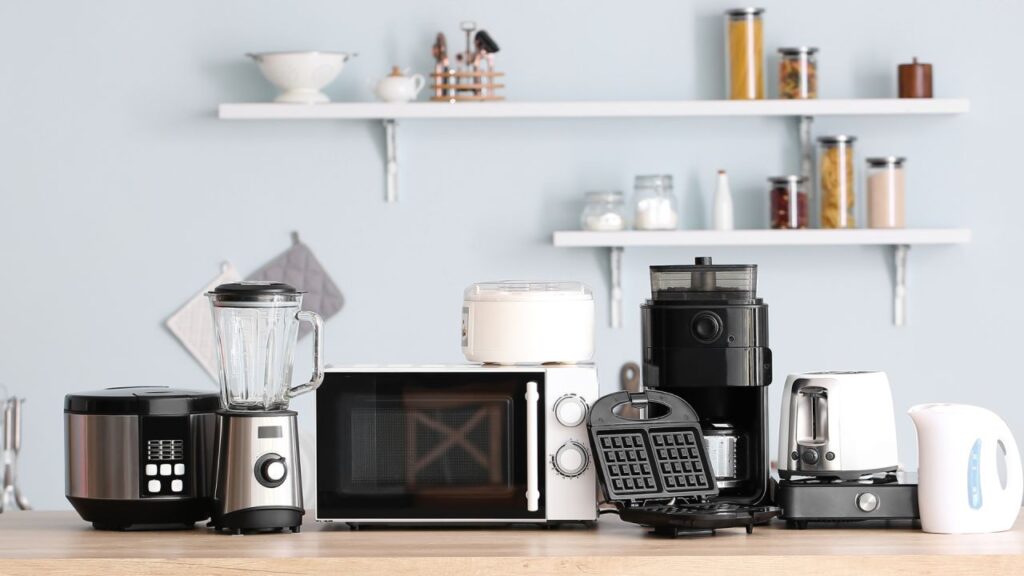
Small appliances occupy a unique corner of the global supply chain. Most rely on affordable manufacturing hubs in China, Vietnam, and Malaysia, where production costs are low but logistics are complex. When geopolitical tensions or trade renegotiations occur — as seen with the renewed U.S.–China tariff adjustments and E.U. import review policies in Q3 2025 — it creates ripple effects that hit mid-range consumer goods first.
Unlike large home appliances (which are often assembled domestically), small kitchen and lifestyle gadgets are heavily import-dependent. A 10% tariff on electronic components wouldn’t just affect raw material pricing; it would greatly inflate costs throughout the chain — from assembly to retail mark-up. And who bears the loss? While, of course, you.
To illustrate:
- The average countertop air fryer that sells for £120 today could reach £145 by mid-2026.
- A premium espresso machine might see a 20–25% jump due to increased costs of heating elements and stainless steel components.
- Even entry-level blenders and hand mixers are expected to rise by at least 10% as transportation and part tariffs add up.
For consumers in the U.K. and Europe, a weaker currency against the dollar compounds the issue, making imported electronics even pricier.
Why This Matters Now
The small appliance market came into existence because of and has thrived on affordability — millions of households bought into the trend of replacing single-use gadgets with smarter, compact, multi-functional devices. However, these innovations often depend on imported microchips, motors, and precision parts. As tariffs rise, retailers will either raise prices or phase out budget models entirely.
This means that appliances you’ve been eyeing — like that latest Ninja Dual Zone Air Fryer, the Instant Pot Duo Plus, or a compact Sage espresso maker you saw at a well-lit electronics store— may never be this cheap again.
So while the headlines focus on housing, fuel, and grocery inflation, a quiet but significant surge is coming for small household tech. Consumers who plan ahead now can lock in lower prices before the tariffs settle into retail pricing.
In the next section, we’ll unpack why these tariff hikes are happening, which product categories are most exposed, and how brands are reacting behind the scenes. Understanding this backdrop is key to deciding which small appliances are truly worth buying before prices spike.
Why Small Appliances Are the First to Feel Tariff Pressure

When trade policies tighten or tariffs rise, not all product categories suffer equally. While heavy-duty appliances like refrigerators and washing machines usually absorb extra costs through local assembly or government subsidies, small household appliances are far more vulnerable. Their supply chains are leaner, their margins thinner, and their reliance on imported components much greater.
To understand why prices for compact gadgets may surge first, we need to look at where they’re made, how they’re shipped, and what’s changing in the global trade map for 2025–2026.
1. The Geography of Manufacturing: Asia’s Dominance
Nearly 75% of small kitchen and home appliances sold in the U.S., U.K., and Europe originate from manufacturing hubs in China, Vietnam, and Malaysia, according to the 2025 Global Appliance Supply Index. Even premium brands like Ninja, De’Longhi, Sage, Philips, and Instant Brands rely heavily on East Asian factories for component assembly — especially for motors, heating coils, and electronic controls.
That’s why the newly introduced U.S.–China component tariff adjustments (effective Q1 2026) and EU import duty reviews on electronics and steel parts will have immediate knock-on effects. Even if the appliances themselves are assembled in Europe or the U.S., key parts such as motors, thermistors, and circuit boards are still sourced from Asia and thus subject to tariffs.
This ripple effect means a “Made in U.K.” coffee maker could still face cost inflation if its pump or heating element crosses a taxed border. No amount of labelling can save you.
2. Smaller Products, Thinner Margins
Large appliance manufacturers can offset tariffs by adjusting production volumes, bundling promotions, or delaying price updates. Small appliance makers, on the other hand, operate on much tighter profit margins — often 10% or less.
That means a 10% increase in import costs from tariffs or shipping fees can quickly force retail price hikes. Unlike premium tech, where high margins can absorb temporary shocks, budget-level gadgets are especially exposed.
Brands like Tower, Russell Hobbs, and Proctor Silex are already warning distributors of a potential 10–15% increase in wholesale pricing by mid-2026. Retailers will almost certainly pass those costs directly to customers.
3. The Rising Cost of Components and Logistics
Beyond tariffs themselves, the supply chain cost structure has shifted. Global shipping rates are up nearly 30% since 2023, partly due to rising fuel prices and container shortages. Microchips and precision components, used in smart kettles and air fryers, have also become scarcer as automotive and AI industries dominate semiconductor supply.
As a result, the “smart” category of appliances — those using sensors or app connectivity — faces the steepest increases. Expect higher prices on:
- Smart air fryers and ovens (with digital panels)
- Connected coffee and espresso machines
- AI-enabled multi-cookers and blenders
Even simple items like toasters and handheld mixers aren’t immune, as most include imported thermostats, wiring harnesses, or speed controllers. You’ll have to think twice before toasting a piece of bread.
4. The Currency Factor: Europe’s Double Squeeze
While the U.S. may see moderate increases due to strong domestic demand, the U.K. and European markets face an extra challenge — currency depreciation. A weaker euro and pound mean imported goods from Asia, even before tariffs, already cost more in real terms. Once tariffs are added on top, the price pressure compounds.
So, while a U.S. shopper might see a $20 jump on a $150 appliance, European consumers could face increases closer to €40–€60 by early 2026.
5. The Consumer Impact: Everyday Gadgets, Everyday Costs
Because small appliances are high-volume, repeat-purchase products, even modest increases can feel significant.
A 15% price hike on something as common as a toaster, kettle, or coffee grinder will ripple across millions of households — not enough to spark headlines, but enough to reshape shopping behavior.
This is why industry analysts are calling 2025’s fourth quarter the “last golden window” for consumers to buy small appliances before inflation and tariffs push them into new price brackets. If you don’t believe us, trust the industry analysts.
Product Categories Most Affected by Tariff Increases

While tariffs technically apply to imported components and not directly to finished retail goods, the effects trickle down fast — especially in categories that rely on precision parts, electronics, or heavy metals. In the case of small household appliances, several key segments stand out as highly vulnerable to 2025–2026 cost hikes.
1. Kitchen Essentials: Air Fryers, Multi-Cookers & Toasters
Few products illustrate the tariff risk better than air fryers and multi-cookers — the two fastest-growing appliance types of the past five years. Both depend heavily on heating coils, steel baskets, and digital control boards, nearly all of which are manufactured in China or Malaysia.
- Air fryers: The average model uses up to 30 imported components, including thermostats, fan motors, and heat sensors.
Analysts predict price increases of 15–20% by mid-2026 as steel and electronic tariffs take effect. - Multi-cookers (like Instant Pot and Ninja Foodi lines): These will face both component and packaging cost hikes, since packaging materials (especially food-safe plastics) are also being targeted in U.S. and E.U. environmental tariffs.
- Toasters and sandwich presses: Though simple in design, they contain imported resistors and wiring harnesses subject to tariffs on copper and alloy imports.
For consumers, this means mid-range models — the £80–£150 segment — could soon cost closer to £200 without any functional upgrades.
2. Coffee & Espresso Machines
Coffee appliances are another hot zone. Sorry, coffee junkies. So most makers rely on precision pumps, thermoblocks, and pressure valves made in Asia. Even European icons like De’Longhi, Sage, and Krups outsource key internals.
The impact:
- Expect espresso machines, pod systems, and bean-to-cup brewers to see 20–25% price increases in early 2026.
- High-end models using stainless steel bodies will face extra costs due to rising raw material tariffs and stricter recycling compliance laws in the E.U.
The premium coffee niche may absorb some of this inflation, but entry-level buyers will feel it most. A basic £120 coffee machine may soon become a £150–£160 purchase.
3. Smart Kitchen Gadgets & Connected Appliances
The small-appliance category most at risk is also the most modern: smart gadgets. AI-integrated blenders, app-controlled ovens, and Wi-Fi-enabled cookers depend on imported microchips, Bluetooth modules, and sensors — all of which are caught in global semiconductor tariffs and supply constraints.
- The connected cooking device market (worth $13.4 billion globally in 2025) is projected to shrink temporarily as price sensitivity rises.
- Expect brands like TOKIT, Instant Brands, and Philips to scale back on cheaper models and focus on high-margin smart devices instead.
If you’ve been considering a connected air fryer or a smart bread maker, 2025’s final quarter is likely the best time to buy before manufacturers pass on the higher costs.
4. Cleaning & Home Maintenance Devices
Tariffs won’t stop at the kitchen. Small domestic tools — vacuum cleaners, handheld steamers, and garment care gadgets — are equally affected.
- Cordless vacuums rely on lithium-ion batteries (subject to rare-metal import duties).
- Steam cleaners face rising costs due to steel pressure chamber components.
- Even handheld garment steamers and fabric shavers include imported thermostats and pumps.
Dyson, Shark, and Bissell have already issued subtle pricing adjustments in 2025 Q3, hinting at further increases in early 2026.
5. Personal & Seasonal Appliances
If you thought it was over, think again. Fans, humidifiers, dehumidifiers, and portable heaters — all use copper wiring and plastic casings, both on the tariff list. The small size and low price of these products leave little room for absorbing extra costs, so retail prices could rise sharply.
Key Takeaway
So what do we do, you ask? Appliances that blend electronics, heating, and metal components — essentially, anything that heats, spins, or senses — will be the first to feel tariff pressure. If you’re a consumer who relies on such everyday devices, you should act fast, especially for mid-range models where cost hikes will be most visible.
Top Small Appliances to Buy Before Price Hikes
With price increases on the horizon, 2025’s final quarter presents a rare opportunity for consumers to upgrade their homes before costs rise permanently. But know this, not every gadget deserves your money — the key is choosing appliances that are already best-in-class, have strong brand support, and are unlikely to drop further in price even during sales.
Below are the top-performing small appliances across major household categories that experts and consumer reviews agree are worth buying now.
1. Air Fryer: Ninja Dual Zone AF400UK (or AF400US)

Current Price: ~£199 / $229
Why Buy Now: Ninja’s Dual Zone line dominates the air fryer market with its dual-drawer design, rapid heat technology, and reliable build quality.
With steel components and imported control boards, it’s one of the models most exposed to tariffs — especially as heating elements and fan motors are subject to cost hikes.
- 5L capacity ideal for families.
- Separate temperature control for each basket.
- Consistent performance and highly rated (4.8★ average).
- Dishwasher-safe baskets, strong spare parts availability.
Expected 2026 Price: ~£230–£250 ($260–$280)
This is the type of appliance that may never go on a deep sale again once tariffs adjust.
2. Multi-Cooker: Instant Pot Duo Plus Whisper-Quiet
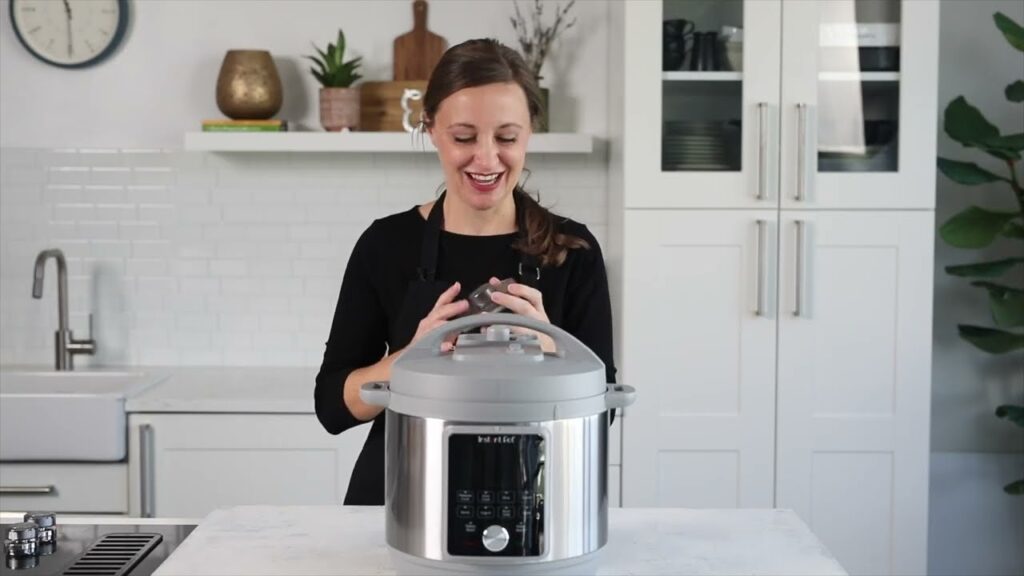
Current Price: ~£89 / $99
Why Buy Now: The entry-level multi-cooker that redefined home cooking convenience — and still unbeatable for the price.
Instant Pot sources many internal components from China and Malaysia, including heating elements and electronic displays. As tariffs bite, production costs will jump.
- 9 cooking modes: pressure, slow, sauté, yogurt, steam, rice, and more.
- Whisper-quiet steam release (family-friendly).
- Highly energy-efficient (saves ~60% vs oven cooking).
Expected 2026 Price: ~£110–£120 ($129–$139)
Because this model already sits near the cost price, any global component tax is likely to push it up quickly.
3. Coffee & Espresso Machine: Sage Bambino Plus (Breville in the U.S.)
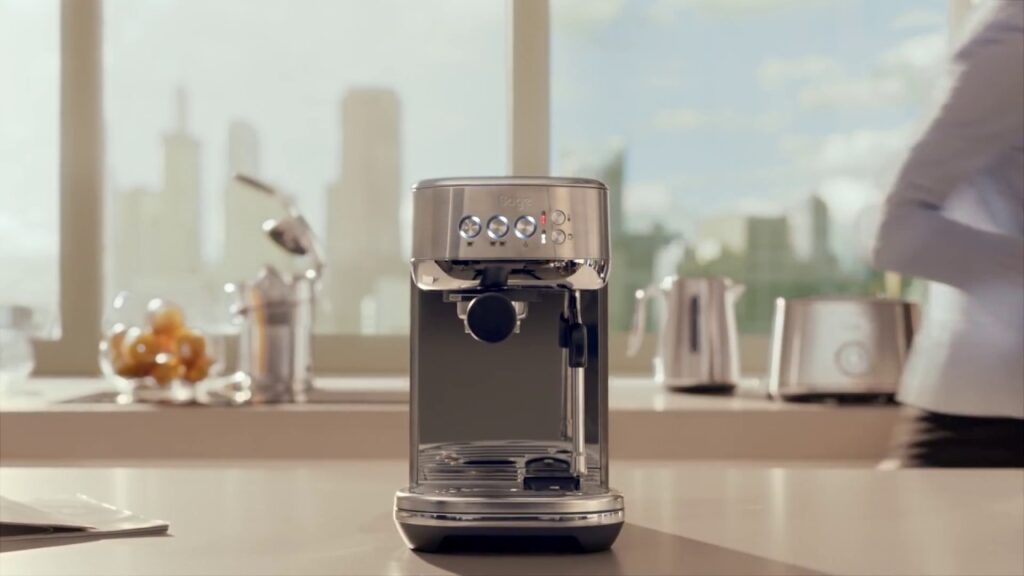
Current Price: ~£349 / $399
Why Buy Now: Compact, fast, and professional-grade — one of the few espresso machines that heats in under 3 seconds.
The Sage/Breville line depends on imported thermoblocks and pressure pumps — both categories slated for increased import duties.
- Café-quality microfoam via automatic steam wand.
- Slim design ideal for apartments.
- Reliable build and easy maintenance.
Expected 2026 Price: ~£399–£429 ($449–$479)
The Bambino Plus holds its resale value well, so buying before tariff-related increases is a smart investment for coffee lovers.
4. Blender/Food Processor: Kenwood MultiPro Compact FDM312SS
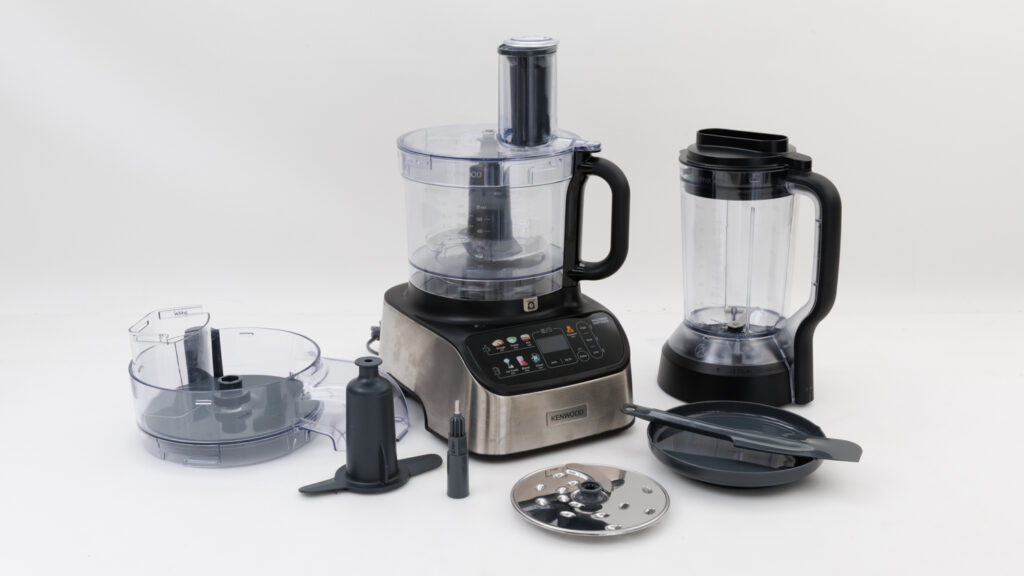
Current Price: ~£119 / $135
Why Buy Now: A no-fuss 2-in-1 processor built to last. Its stainless steel housing and metal attachments are directly affected by material tariffs.
- Includes slicing discs, blender jug, and dough tools.
- Designed for small-space kitchens.
- Dishwasher-safe, long warranty, easily available parts.
Expected 2026 Price: ~£139–£149 ($159–$169)
A classic all-rounder that combines mechanical durability with everyday convenience — smart to buy before steel and alloy prices increase.
5. Smart Kitchen Gadget: TOKIT Omni Cook (All-in-One Smart Cooker)
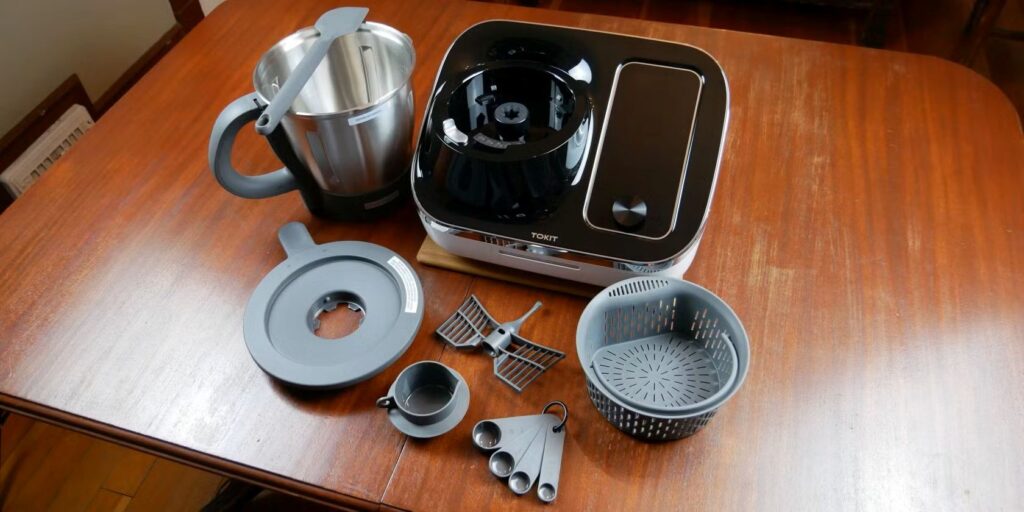
Current Price: ~£999 / $1,099
Why Buy Now: It’s expensive, yes — but this is the AI-integrated cooking platform everyone is watching.
Using imported microchips, induction components, and high-end sensors, it’s almost guaranteed to climb in price once tariff policies on semiconductors and electronics take effect.
- Performs 21 cooking functions (weighs, chops, kneads, steams, cooks).
- 7-inch smart touchscreen with 3,000+ recipe database.
- Firmware updates and cloud recipe access.
Expected 2026 Price: ~£1,150–£1,200 ($1,249–$1,299)
Premium buyers should act quickly — smart cookers like this are first in line for tariff impact.
6. Cordless Handheld Vacuum: Shark WandVac 2.0
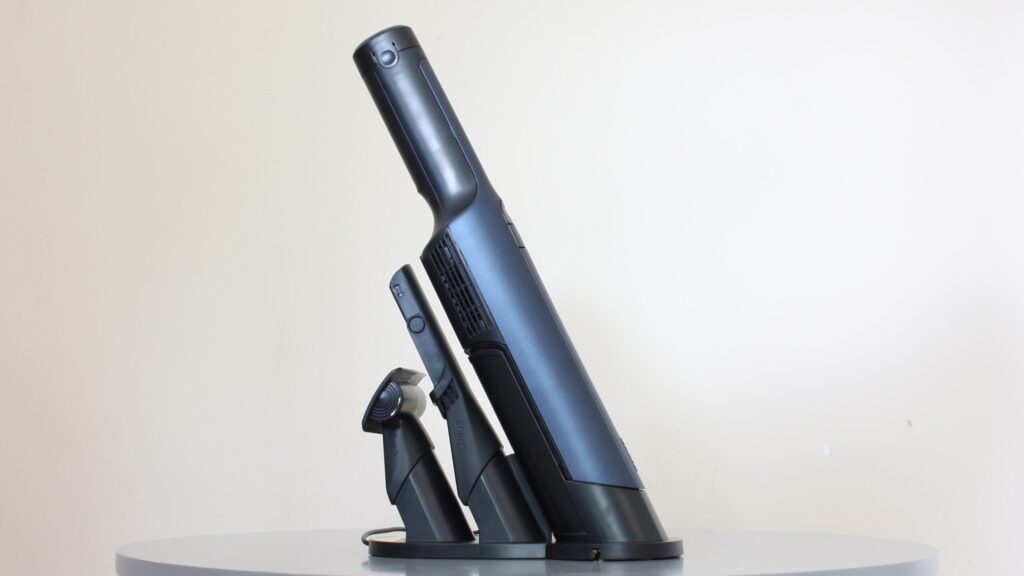
Current Price: ~£199 / $199
Why Buy Now: Lightweight, powerful, and ideal for quick daily cleanup. Contains lithium-ion batteries and high-efficiency motors, both under tariff pressure.
- Compact, wall-mountable design.
- Fast charge and quiet motor.
- 7★ rating from over 4,000 reviews.
Expected 2026 Price: ~£229–£249 ($229–$249)
7. Bonus Pick: De’Longhi Icona Vintage Kettle & Toaster Set
![]()
Current Price: ~£139 / $159 (set)
Why Buy Now: Classic design, durable materials, and imported heating elements — small tariffs will hit fast here. These sets are frequently sold out and likely to rise first.
Key Buyer Note
Across all categories, stainless steel, copper, lithium, and semiconductors are the common denominators driving future price increases. If your appliance uses any of these materials, it’s worth buying now.
How to Shop Smart and Save Before Tariff Hikes
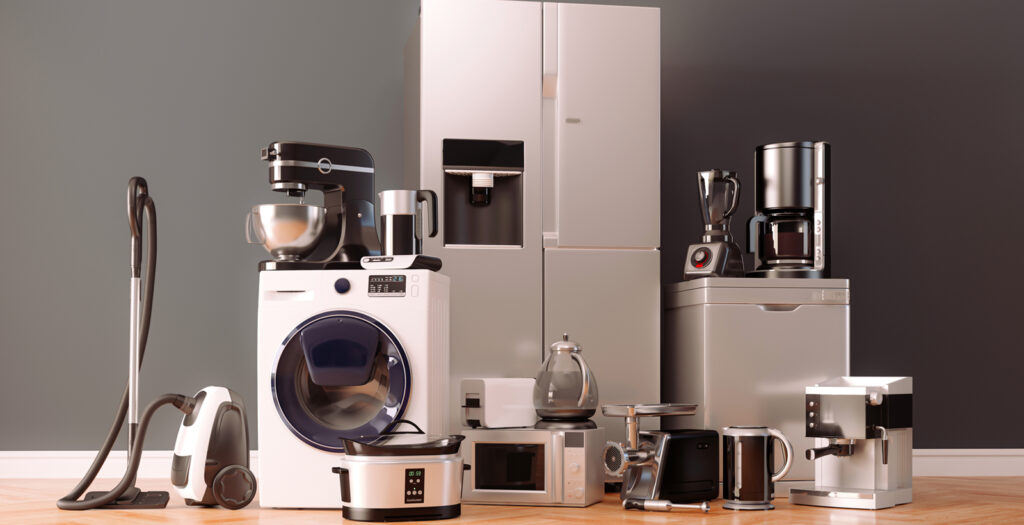
Buying appliances before a major price surge isn’t just about hastily finding the best product — it’s about taking a step back, relying on timing, strategy, and awareness. Tariffs don’t appear on store shelves overnight; they ripple gradually through the supply chain. This gives consumers a short but valuable window of opportunity to shop wisely before manufacturers and retailers adjust pricing.
If you look below, we have gathered actionable steps to help you lock in the best deals, avoid panic-buying traps, and ensure your purchases truly deliver long-term value.
1. Understand the Tariff Timeline
Most new tariffs on imported components are expected to phase in between late 2025 and mid-2026, with the first visible price effects showing around Q2 2026. That gives consumers roughly 6–8 months to buy before new inventory shipments reflect higher costs.
Retailers typically hold existing stock purchased at pre-tariff prices — meaning appliances on the shelves now are priced lower than those in upcoming shipments.
Pro Tip: Prioritize current-year models (2025) over “coming soon” releases. The older stock is both tariff-free and often discounted to make room for the next generation.
2. Target Brands That Manufacture Overseas
Since tariffs mainly affect imported parts, products made domestically may be less affected, but in small appliances, that’s rare. Brands like Ninja, Instant Brands, De’Longhi, Kenwood, and Philips still rely heavily on Asian assembly lines.
If you’re loyal to these brands, buy now before price increases filter through. On the other hand, locally assembled alternatives (for instance, smaller U.K.- or E.U.-based boutique brands like Dualit or Sage) may remain stable a bit longer, but even if they import their internals, delays will only buy you a few extra months.
3. Shop During Strategic Windows
Even with inflation, retailers still rely on predictable discount periods to move inventory. The smartest time to buy is when sales overlap with pre-tariff stock availability.
Best shopping periods before 2026 hikes:
- Black Friday & Cyber Monday (November 2025) — Peak clearance for pre-tariff models.
- Boxing Day / New Year Sales (Dec–Jan) — Major appliance retailers often offload older stock to hit annual turnover targets.
- Spring Clearance (April 2026) — The final window before tariff-affected shipments dominate.
Avoid: Waiting for “next-generation” product launches. Early models will be priced higher due to updated materials and logistics costs.
4. Look Beyond Big Box Retailers
E-commerce competition remains fierce, which benefits proactive shoppers. Independent online stores and factory outlets often move inventory quietly with unadvertised bundle deals.
- Compare major retailers (e.g., Argos, Currys, Best Buy, Target) against niche appliance sites like AppliancesDirect or AO.com.
- Use price-tracking tools such as Honey, CamelCamelCamel, or PriceSpy to monitor pre-tariff price baselines.
- Subscribe to manufacturer newsletters — companies like Ninja and Sage often issue “direct from factory” coupons weeks before announcing MSRP increases.
5. Don’t Chase the Cheapest — Chase the Longest Lasting
When costs rise, replacement cycles matter more. A cheap £60 blender that burns out in a year is no bargain if you’ll pay £80 for the next one post-tariff.
Invest instead in durability and spare-part support. Brands like Kenwood and Sage maintain spare components for 5–10 years, allowing affordable maintenance instead of full replacement. Over a decade, that decision can save far more than a short-term discount.
Smart Shopping Mindset: Buy once, buy well, and buy before the price curve spikes.
6. Consider Multi-Function Devices to Offset Costs
Another clever strategy is consolidation. Instead of buying separate appliances for every task, invest in one high-quality multi-function device. A single Ninja Foodi or Instant Pot can replace a fryer, steamer, and slow cooker — saving both counter space and tariff exposure.
This approach future-proofs your kitchen while minimizing long-term replacement costs.
7. Watch for Extended Warranties and Price-Match Guarantees
Retailers often use these to maintain confidence during price turbulence. If a store offers “price freeze” or “price match for 30 days”, take advantage — it locks in your savings even if tariffs push prices up after purchase.
Final Advice
Remember, remember, come November, the best buyers in a volatile market are informed, not impulsive. Read product histories, compare global availability, and remember: tariffs don’t just inflate prices; they shift how brands design, distribute, and discontinue products.
By purchasing strategically now — especially essential gadgets and high-demand small appliances — you’re not just saving money; you’re staying one step ahead of a global market reshaping itself in real time.
Conclusion & Long-Term Consumer Outlook
Every few years, economic forces reshape how we buy, and 2025 is one of those turning points. Psst, you heard it from us first: the upcoming tariff adjustments on imported components might not make front-page news, but their impact will quietly reach millions of homes. From your morning coffee machine to the air fryer you use for dinner, prices are about to move in two directions: up and up.
Yet within this challenge lies opportunity. For informed consumers, 2025’s final quarter represents a window of value — a brief stretch before new tariffs, shipping fees, and currency fluctuations converge to reset the appliance market. Acting now isn’t about panic; it’s about preparation.
1. The Economic Undercurrent: Why Prices Will Stay Elevated
Unlike short-term inflation spikes, tariff-driven increases have lasting effects. Once higher import costs enter the production chain, they rarely reverse. Even if tariffs are reduced later, brands seldom roll back retail prices fully — they’ve already adjusted marketing, profit margins, and distribution contracts around the new normal.
The previous U.S.–China trade wave (2018–2019) provides a clear precedent. After tariffs on electronic goods rose, average small appliance prices jumped by 18% — and never dropped back, even after partial relief in 2020.
With Europe now reviewing its own import duties and environmental tariffs, consumers across regions should expect a similar long-term outcome: 2026’s “new normal” will make today’s prices look generous.
2. What Smart Consumers Are Doing Right Now
Across the U.S., U.K., and Europe, proactive shoppers have already begun timing purchases around tariff milestones. Instead of waiting for uncertainty to pass, they’re focusing on durable essentials and high-utility upgrades.
The pattern is clear:
- Air fryers, multi-cookers, and blenders are among the top fast-moving categories for Q4 2025.
- Coffee machines and vacuums are next, as they combine high functionality with parts heavily sourced from Asia.
- Consumers are prioritizing quality brands — not the cheapest models — because durability protects them from future price inflation.
Many are also leveraging holiday sales to stock up before early 2026. Once retailers update their stock at tariff-adjusted prices, those “sale” banners will no longer mean savings — they’ll just mask new, higher baselines.
3. The Psychology of Timing and Value
Most people think of shopping in terms of discounts, but timing often beats any coupon. Buying before a market-wide price correction is essentially earning a quiet return on your purchase.
Think of it this way:
A £200 air fryer today could cost £240 next spring. That’s a 20% guaranteed increase in six months — and avoiding it is the equivalent of saving £40, tax-free.
In uncertain economies, that kind of predictable value is rare. Tariff windows give you the power to beat inflation by acting early, not reacting late.
4. How Manufacturers and Retailers Will Adapt
Brands will likely respond to tariffs by streamlining their product lines. Expect fewer budget models and more emphasis on premium, durable, or “smart” versions that justify higher price tags.
At the same time, retailers will promote “buy now, pay later” schemes and loyalty discounts to soften the psychological blow of higher costs — but those programs won’t erase the underlying inflation.
This transition will reshape the appliance industry in 2026, pushing consumers to think long-term and value quality over novelty.
The golden rule: Buy products designed to last five to ten years, not ones designed to be replaced in two.
5. Looking Ahead — and Acting Wisely
While tariffs may feel abstract, their effects will be tangible. For everyday households, they’ll change how we budget, prioritize, and invest in the tools that make life efficient.
But the good news is this: there’s still time. Savvy buyers, like you, should act before the tariff curve — especially during late-2025 sale seasons and lock in today’s lower costs to enjoy your purchases for years before new pricing settles in.
So whether it’s a Ninja Foodi, Sage espresso machine, or Kenwood food processor, this is the season to buy what you’ve been delaying for months.
Because once tariffs hit, they don’t just raise prices — they redefine what “affordable” means.
Final Takeaway
This is what we think: smart consumers aren’t waiting for the storm to pass — they’re buying before the clouds arrive.
2025’s last quarter is the right moment to upgrade your small appliances. Buy wisely, choose durability over discount, and you’ll not only save money, but you’ll outsmart the market. You have our word.


